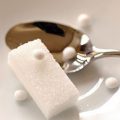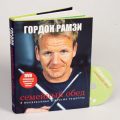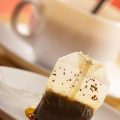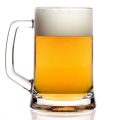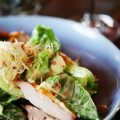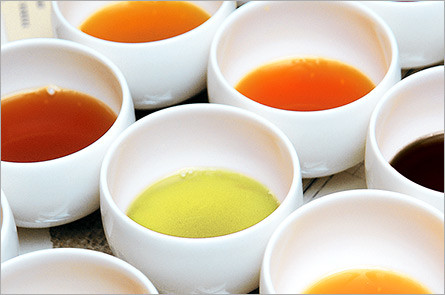 Green Chinese teaThe tea bush was famousChinese botanists and doctors since ancient times. Even then, people discovered the powerful healing power of tea for many ailments. Tea was prescribed not only as a drink, but also as ointments. The popular Russian method of drinking tea with lemon was borrowed from Chinese caravanners. And Buddhists used it to stay awake during meditation. In ancient times, tea was boiled, not brewed, and this infusion was drunk for medicinal purposes. Until about the 7th century A.D., Chinese residents prepared a kind of soup: tea leaves were steamed, pounded in a mortar, and then boiled together with rice, ginger, salt, orange peels, spices, milk, and even onions. In the 9th-11th centuries, tea was ground into a fine powder and whisked in water, considering the color of the foam to be the main advantage of the drink: the lighter the foam, the better the tea was brewed. To emphasize the lightness of the foam, it was served in black cups. It was this method that was borrowed by the Japanese. In the 14th century, another tea tradition was formed: tea began to be brewed - the leaves were no longer boiled, but poured with hot water. The color of the infusion became a priority, so dark cups were replaced by light ones, and a teapot became an obligatory attribute of the tea table. Tea weapons The most famous teapots are made of purple clay from the Yixing province - this clay "breathes". The teapot is glazed, and with proper care, its shine increases over time. In the Ming era, such a teapot was worth the fortune of a wealthy family. While southerners prefer to brew tea in a teapot, in northern China and Sichuan Province they prefer a gaiwan - a bowl with a saucer and a lid that serves as both a teapot and a cup. Traditional tea utensils are called "Cha Dao", which means "tea art". Each item is necessary for a certain stage of tea drinking. Cha lou, a tea funnel, is placed on the neck of the teapot to prevent tea from spilling. The leaves of many varieties swell greatly after brewing, and cha jia, tea tongs, are used to extract them, and cha zhen, a tea needle, is used to clean the spout and strainer. During tea drinking, water and tea residue are poured into the tray through holes in the tray: the tray filled with water can be removed without touching the rest of the utensils. For gongfucha, a ceremonial tea party, a special pair is taken, consisting of a tall and narrow glass - wensianbei and a small bowl - pinbei. Tea is poured into the glass and covered with a bowl, then turned over and lifted - the tea remains in the pinbei, and the aroma is concentrated in the wensianbei. First, you need to inhale the aroma, and then take only three sips from the bowl.
Green Chinese teaThe tea bush was famousChinese botanists and doctors since ancient times. Even then, people discovered the powerful healing power of tea for many ailments. Tea was prescribed not only as a drink, but also as ointments. The popular Russian method of drinking tea with lemon was borrowed from Chinese caravanners. And Buddhists used it to stay awake during meditation. In ancient times, tea was boiled, not brewed, and this infusion was drunk for medicinal purposes. Until about the 7th century A.D., Chinese residents prepared a kind of soup: tea leaves were steamed, pounded in a mortar, and then boiled together with rice, ginger, salt, orange peels, spices, milk, and even onions. In the 9th-11th centuries, tea was ground into a fine powder and whisked in water, considering the color of the foam to be the main advantage of the drink: the lighter the foam, the better the tea was brewed. To emphasize the lightness of the foam, it was served in black cups. It was this method that was borrowed by the Japanese. In the 14th century, another tea tradition was formed: tea began to be brewed - the leaves were no longer boiled, but poured with hot water. The color of the infusion became a priority, so dark cups were replaced by light ones, and a teapot became an obligatory attribute of the tea table. Tea weapons The most famous teapots are made of purple clay from the Yixing province - this clay "breathes". The teapot is glazed, and with proper care, its shine increases over time. In the Ming era, such a teapot was worth the fortune of a wealthy family. While southerners prefer to brew tea in a teapot, in northern China and Sichuan Province they prefer a gaiwan - a bowl with a saucer and a lid that serves as both a teapot and a cup. Traditional tea utensils are called "Cha Dao", which means "tea art". Each item is necessary for a certain stage of tea drinking. Cha lou, a tea funnel, is placed on the neck of the teapot to prevent tea from spilling. The leaves of many varieties swell greatly after brewing, and cha jia, tea tongs, are used to extract them, and cha zhen, a tea needle, is used to clean the spout and strainer. During tea drinking, water and tea residue are poured into the tray through holes in the tray: the tray filled with water can be removed without touching the rest of the utensils. For gongfucha, a ceremonial tea party, a special pair is taken, consisting of a tall and narrow glass - wensianbei and a small bowl - pinbei. Tea is poured into the glass and covered with a bowl, then turned over and lifted - the tea remains in the pinbei, and the aroma is concentrated in the wensianbei. First, you need to inhale the aroma, and then take only three sips from the bowl.

Making Money with Desserts: Success Stories
Evgeniya Polischuk (Fedutinova) instagram:@evgeniyafedutinovavk.com/janeshomebaking– It all started with baking for family and friends. Gradually, I started posting photos of my baked goods on Instagram – and orders started coming in. I made my first custom-made cake on October 13, 2014, and a little earlier I started making macaroons and cupcakes. You could say that the business “found me”, I am very […]

Soups are cold recipes with photos
Cold cucumber soup with yogurt and lemonsorbet from the chef of the restaurant La Taverna Alexander Zhurkin Photo: Getty Images Ingredients: Plain yoghurt – 125 g Cucumber – 150 g Lemon/lime sorbet – 50 g Cocktail shrimp – 24 g Fresh ginger juice – 1 g Lime juice – 5 g Fresh orange juice – 5 g Parsley – 1 g Pink pepper – 1 g Watercress – […]

barbeque kebab
Pork tenderloin in glaze Photo:Dmitry Bayrak/dbstudioPreparation time: 20 minutes + marinating time.Calories: 454 kcal per serving.For 4 servings: 4 pork tenderloins (approximately 300 g each), 1 onion, 2 cloves of garlic, 1 tsp. lemon zest, 1 tsp. lemon juice, a pinch of ground cumin, coriander and turmeric, 1 tbsp. vegetable […]

Pierre Duacan: dietary recipes: Ducane diet
Beetroot soup Photo:Season’S, Luxury Hotels RepresentationYou will need:· Boiled beetroot – 60 g· Fresh cucumbers – 20 g· Red radish – 20 g· Green onions – 10 g· Egg – 1 pc.· Drinking mineral water – 200 g· Salt – 1 gPreparation:· Boil the egg and beetroot.· Grate the cucumbers, radish and part of the beetroot. Put everything […]
